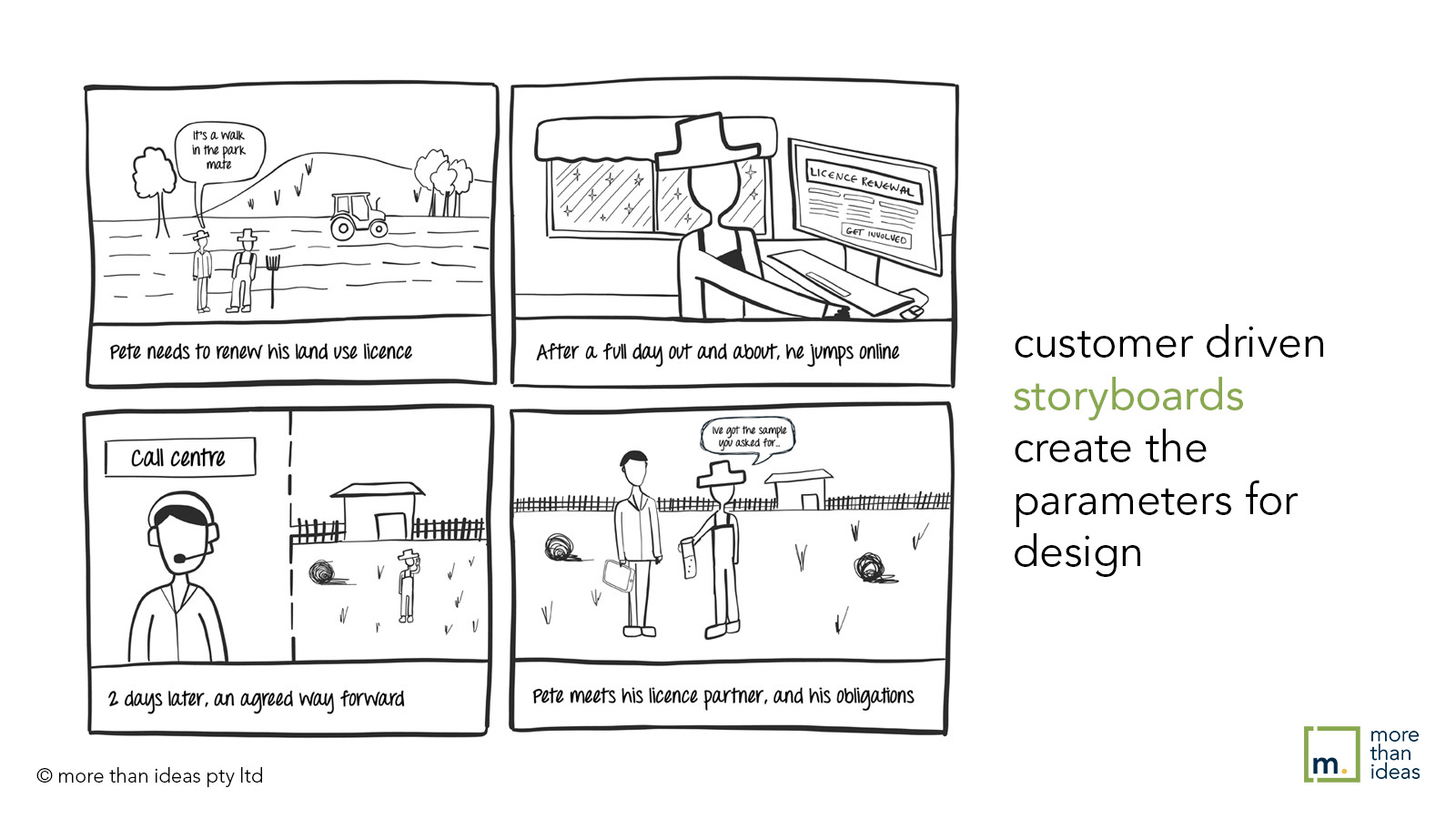Narrative helps us order information. It gives a framework within which we make choices about what we do and don’t do.
A good storyboard is a great way to get people on one page and working towards an agreed outcome. Whether it is a team of designers tasked with solving a policy or service challenge, or keeping people focussed on the higher order reason for the activities they undertake each day in their jobs.
But what makes a good storyboard in a service, policy or organisational context?
- Authenticity: When you are coming up with a preferred future your storyboard isn’t capturing the now. It is capturing the desired. So how do you make it authentic when there are so many unknowns? The answer is to make it authentic to your higher order purpose – the thing you are trying to achieve. So get your purpose right. Make it the real why – what is the problem you are solving? Once you’ve got your purpose right, encourage the people involved in getting to your desired state to come up with their view of success. Involve decision makers, experts, affected communities and end owners. They can pick the characters, setting and style, but the story must deliver a resolution consistent with the higher order purpose.
- Engaging: Even if your team thinks they can’t draw, visual sketches are very important. The non-negotiable here? Write in first person voice and from the characters’ perspectives, unless adopting the narrator position. People will tend to describe things rather than showing them through dialogue, voice and pictures.
- Structure: Use a structured story arc. For example, in a four tile storyboard like the example here, the underpinning structure is:
- a. Paint the now – what’s going on? When? Who is involved? What are we talking about?
- b. Set the challenge – tell a story and show the problem. In this case, there are multiple challenges implied in the story. Our licence applicant is busy during the day, had limited technology, and is dealing with things after a long day. We have challenges of time, access, and capacity. Make sure we know why it is important that your protagonist succeeds.
- c. Show the solution – this part of the story is about painting the how things will be resolved. In an organisational context, this should hint at the elements of the solution. Across this and the previous challenge, we can see the solution requires an online portal that can be accessed at any time by the applicant, with a call back service to line things up and fill in the gaps. It is implied that the call back can be scheduled to when Pete has reception.
- d. Show the resolution – distinct from a solution, the resolution should show how the normative or preferred future has been achieved. In this case, the land user has met his obligations, so his business can operate, and the licence issuer has been able to obtain the sample they wanted, all in one engagement.
- Instructive: A storyboard should keep the team on track during detailed design. They should be able to cascade the design of various components from the storyboard. And if it is used for roll out and training there should be a similar cascading connection to each storyboard.
Don’t worry if the first version isn’t perfect. Update and improve it as you go. The most important thing is to build on your narrative, don’t disconnect during detailed design and implementation. If you do, you’ll leave your connection to client perspective, and often your reason for doing what you are doing, behind
